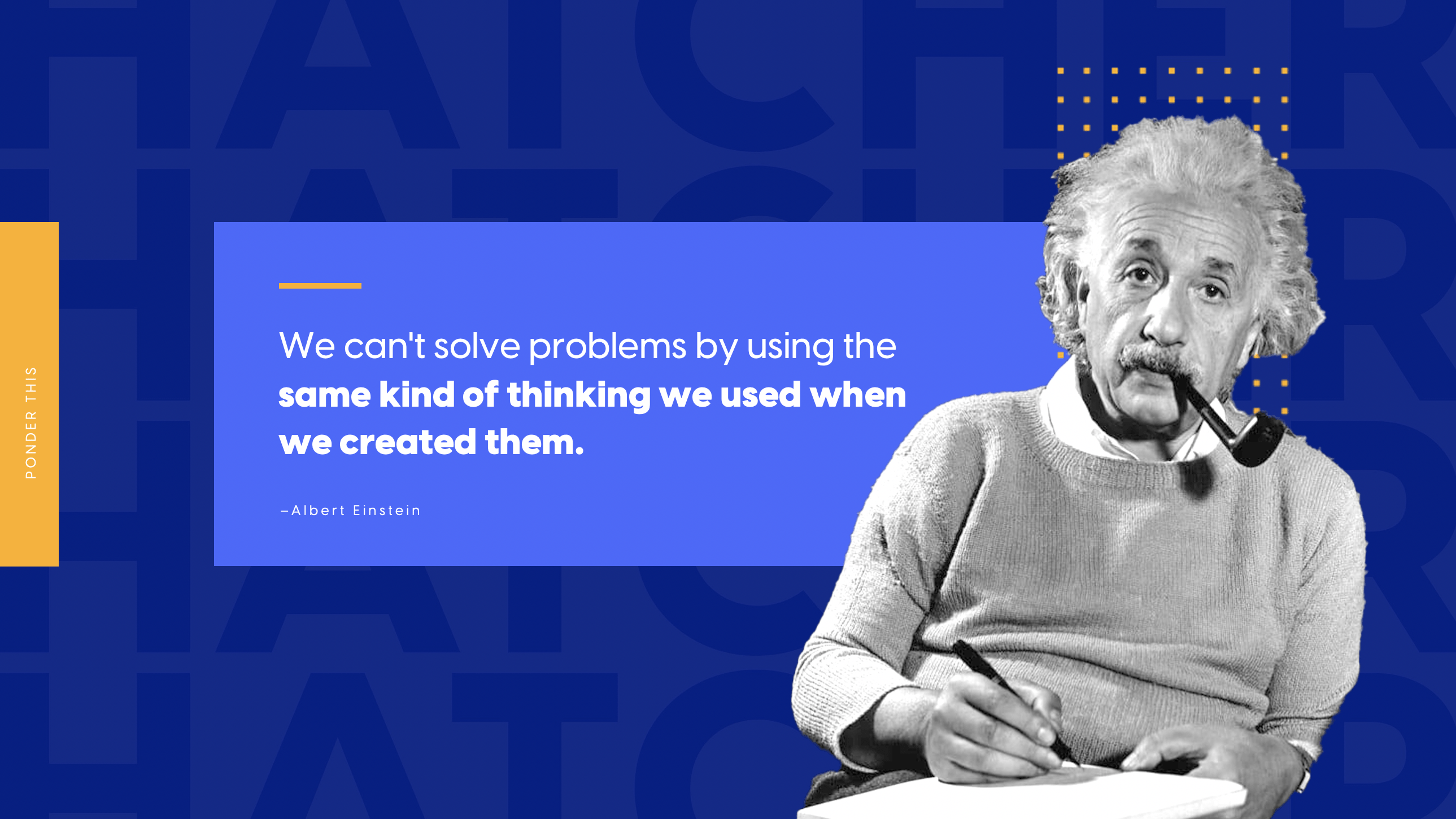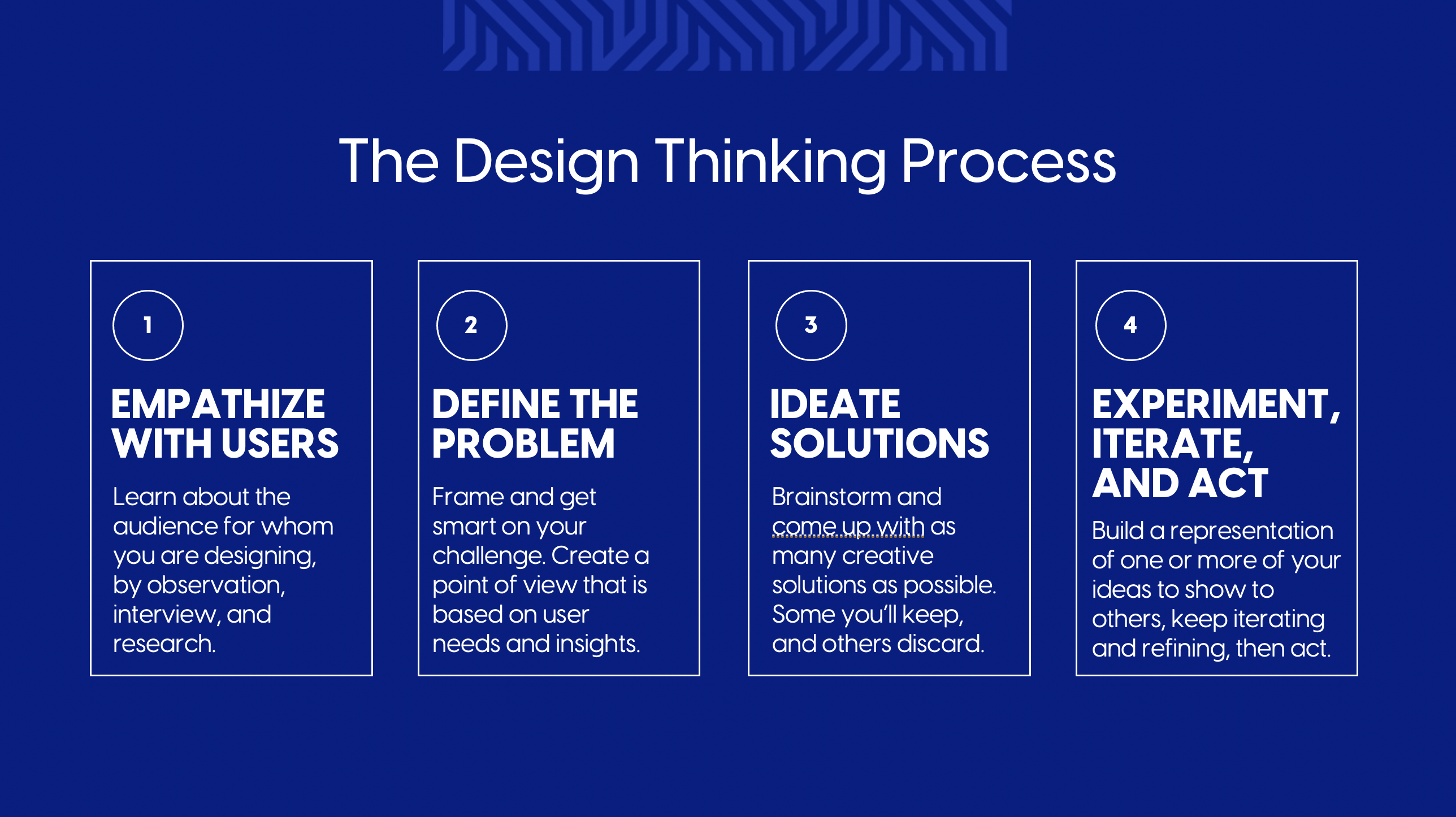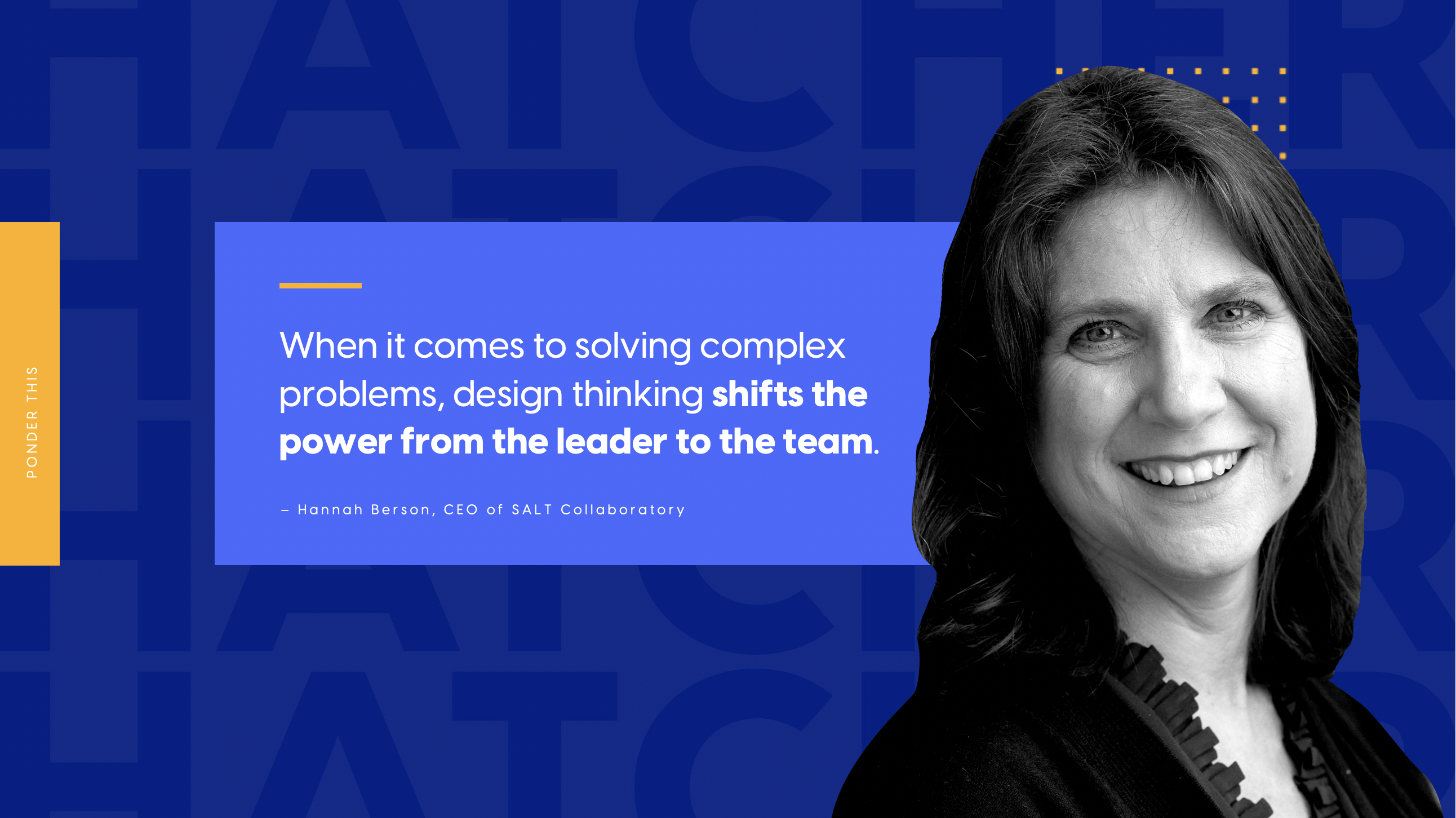
How to Implement Design Thinking Within Your Organization
By Victoria Cain, Senior Associate & Reece Quiñones, Senior Vice President and Creative Director
Traditional problem-solving is a linear process of identifying a challenge and then brainstorming solutions. Conventional brainstorming can work. We’ve all done it successfully — yet other times, we’ve failed to develop a lasting solution.
This is where design thinking can be incredibly beneficial for a business or organization. At Hatcher, design thinking enables us to create lasting value for clients, our company, and even ourselves. It is an iterative process that allows our team to brainstorm multiple solutions that we continually evolve and improve.
One of the main benefits of design thinking is that it can help solve problems outside of traditional design projects. For example, design thinking can spur ideas on dealing with shifting markets and adding innovative offerings. It can help find new ways to encourage behavior change, implement new technology, institute process improvements, develop new initiatives, prioritize diversity, equity, and inclusion, invigorate campaign and event planning, and tackle other complex problems.
So, what is design thinking?
Design thinking is a human-centered process that focuses on the needs and wants of the people involved to develop new and innovative solutions to problems. This approach encourages empathy, research, ideation, prototyping, and testing. Design thinking is as much a mindset as it is a process.
Hatcher’s creative and marketing teams practice design thinking throughout our branding, user experience, and design engagements. To expand the way the firm ideates, we shared this methodology with the entire Hatcher team, providing the tools to solve unique problems for our clients.
One of the first questions we asked was, “How should we implement this new process internally?” We all know that process adoption of any kind requires backing by leadership, available tools and time for implementation, and employee buy-in. Hatcher began this process with enthusiastic endorsement from our leadership team. Since the start of the year, Hatcher has doubled its efforts to build a culture of innovation by enhancing the firm’s capabilities. The Expertise and Innovation (E&I) pillar, a team of 12 Hatcher employees, leads the charge on this important effort. One of the primary goals for the E&I team was to hold a 90-minute comprehensive workshop so everyone on the team would have the knowledge and tools to engage in design thinking immediately.

Define
Our first step was to define our firmwide design thinking process. There are many iterations of design thinking, but they all include the same steps.
- Learn about your audiences by observation, interview, and research.
- Frame and get smart on your challenge. Create a point of view based on user needs and insights.
- Brainstorm and come up with as many creative solutions as possible. Some you’ll keep, others you’ll discard.
- Experiment, iterate, and act.
- Build a representation of one or more of your ideas to show to others. Continue to iterate and refine.
- Toss ideas that are weak and test the good ones. This quick testing phase allows the team to create actionable solutions more quickly.
At Hatcher, we decided to refine the number of steps and adapt our process to fit our team and the value we deliver to our staff and clients. Combining the prototyping and testing steps was vital so that good ideas were not left on the table. We worked through the following milestones to develop and deliver this session with our team.

Research
Once we defined what our design thinking process would look like, we conducted research to identify the tools available to help our staff members implement this process. We combined familiar tools that our design team already uses, such as audience personas, empathy maps, affinity mapping, and customer journey processes, as well as focus groups, surveys, and other qualitative and quantitative methodologies.
These tools were simplified and put into a comprehensive presentation so that staff members would have them handy at the end of the workshop.
Plan
Over several weeks, our E&I team planned the workshop, collecting input from Hatcher leadership on what internal processes they wanted to improve. With ideas for breakout sessions based on these insights, we created an action plan. Action plans allow the team leads to go into the design thinking process with a clear understanding of what tools are needed to find a solution.
With the plan complete, our team started our design thinking process for the workshop. Because our audience was our colleagues, it was easier to walk through the process using real and familiar examples. In preparation for the workshop, the E&I team completed the user research phase, defined the problem, and completed a creative brief in advance to share with the team. By doing this, the staff was ready to ideate once we went into our breakout rooms. The staff also had examples of tools to use.
Deliver
Delivery is half the battle at any lecture, workshop, or keynote speech, so we designed an engaging presentation with a pre-show that shared inspiring quotes from well-known creative leaders. We had copresenters and breakout room facilitators. We used Zoom and Miro, an online whiteboarding platform, to capture great ideas from each group. The workshop was a huge success. Several staff members have already used the design thinking process in their client-facing work.

Overall, the design thinking methodology provides significant, positive change throughout organizations. This includes making clients feel valued and heard, offering innovative solutions that are well implemented and increasing engagement and staff collaboration.
We would love to help you try it out. To learn more about how design thinking can help your organization, contact Senior Vice President and Creative Director Reece Quiñones.